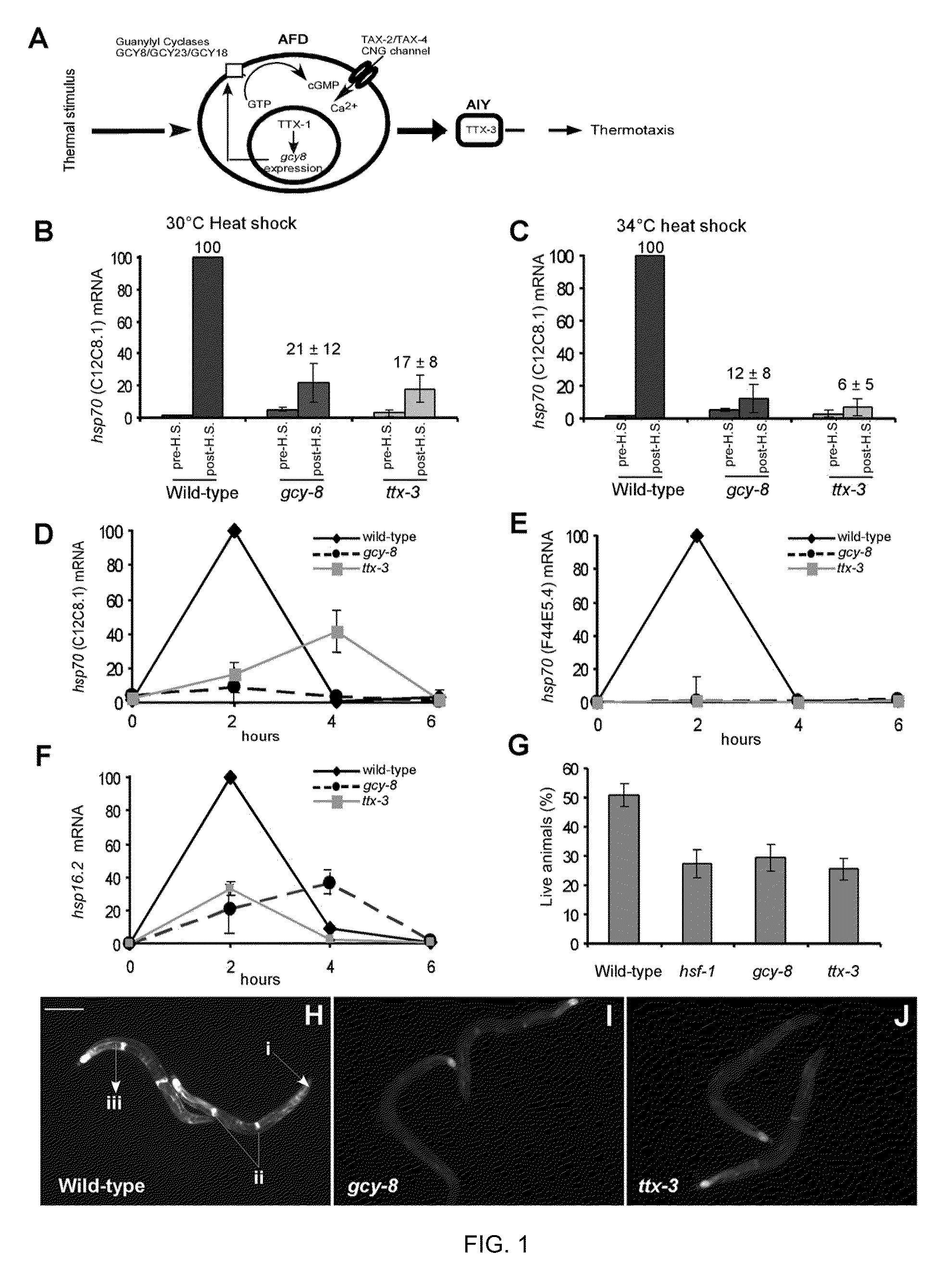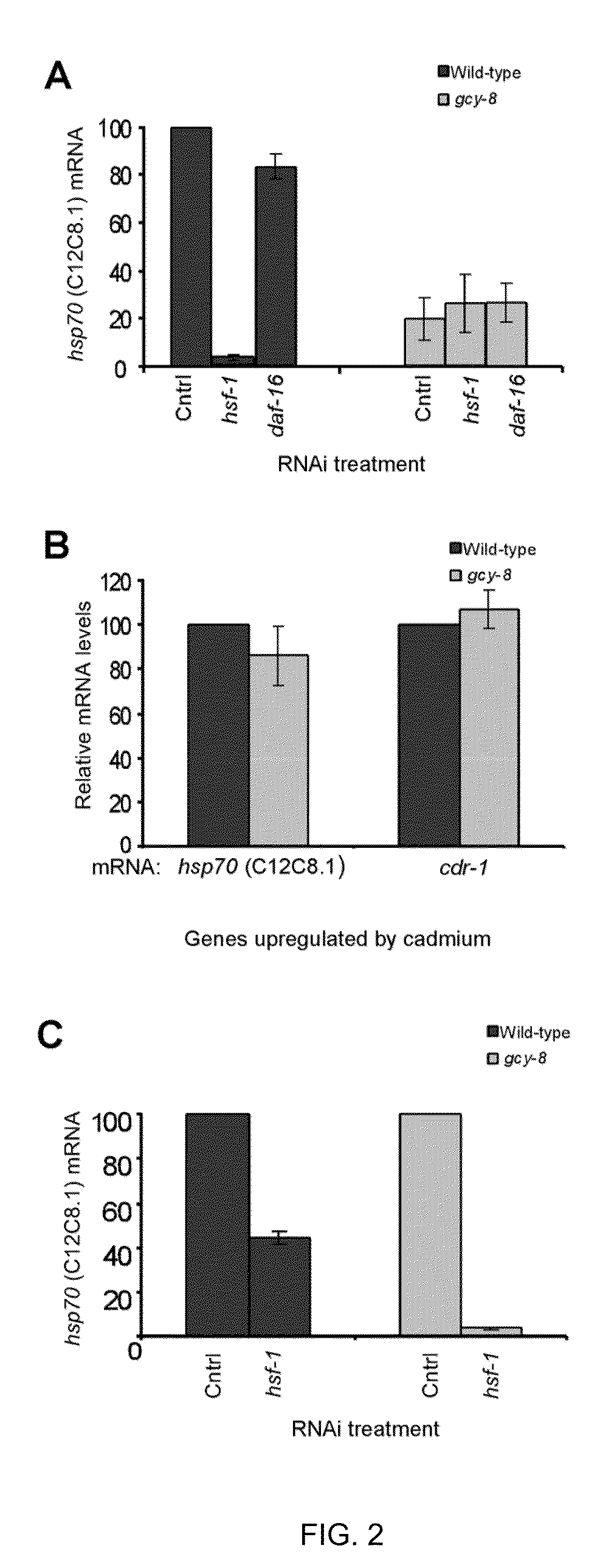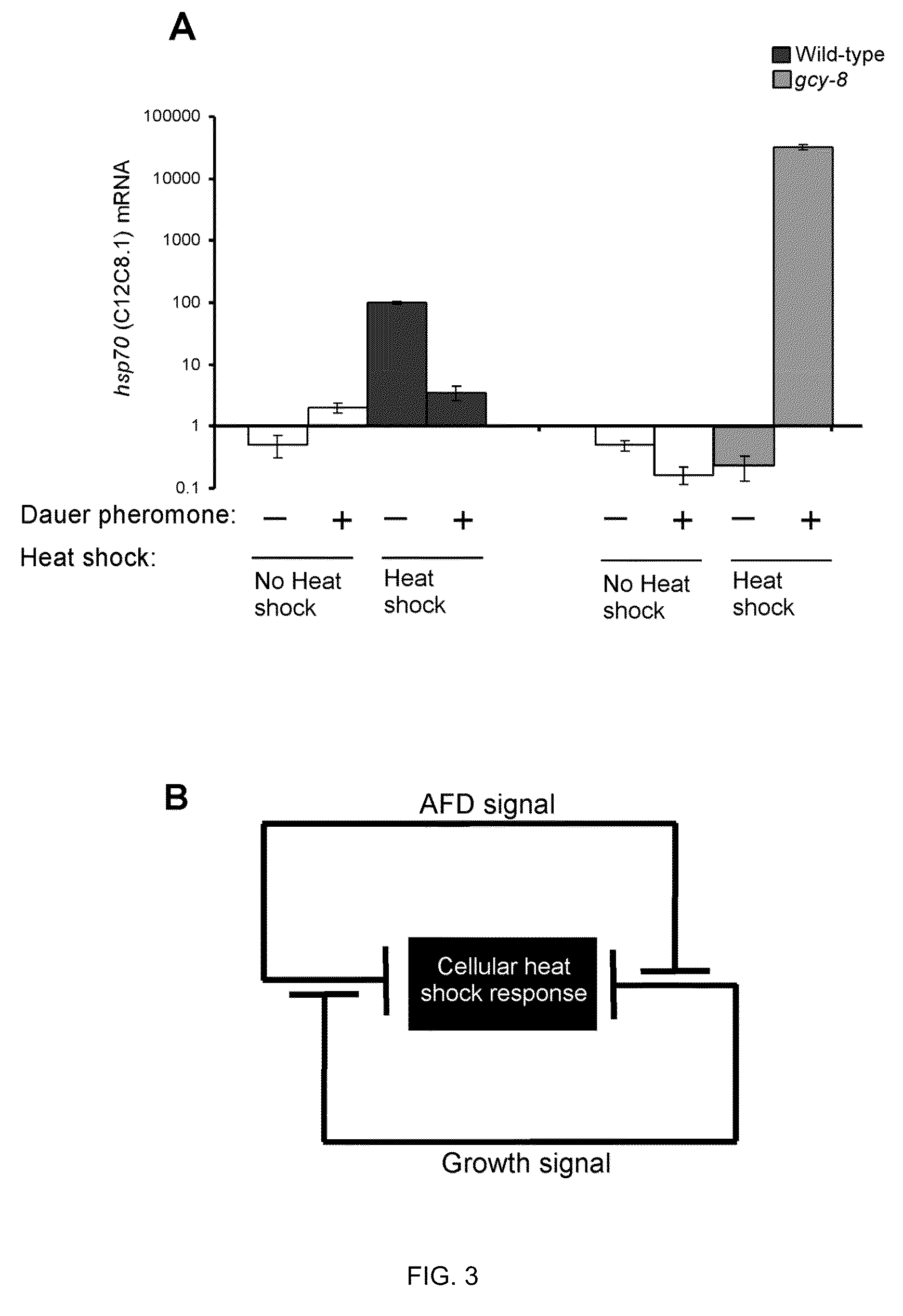Method of regulating the heat shock response
a heat shock and response technology, applied in the field of heat shock response regulation, can solve the problems of affecting cell growth and division, accumulation of large amounts of hsps, etc., and achieve the effect of suppressing the heat shock respons
- Summary
- Abstract
- Description
- Claims
- Application Information
AI Technical Summary
Benefits of technology
Problems solved by technology
Method used
Image
Examples
example 1
Regulation of the Cellular Heat Shock Response in Caenorhabditis elegans by Thermosensory Neurons
[0090]Temperature pervasively affects all cellular processes. In response to a rapid increase in temperature, all cells undergo a heat shock response, an ancient and highly conserved program of stress-inducible gene expression, to re-establish cellular homeostasis. In isolated cells, the heat shock response is initiated by the presence of misfolded proteins and therefore thought to be cell-autonomous. In contrast, we show that within the metazoan Caenorhabditis elegans, the heat shock response of somatic cells is not cell-autonomous, but rather depends on the thermosensory neuron, AFD, which senses ambient temperature and regulates temperature-dependent behavior. We propose a model whereby this loss of cell autonomy serves to integrate behavioral, metabolic, and stress-related responses to establish an organismal response to environmental change.
[0091]The heat shock response counteracts ...
example 2
Neuronal Regulation of Chaperone Expression
[0186]Example 1 and Prahlad et al. (2008). Regulation of the Cellular Heat Shock Response in Caenorhabditis elegans by Thermosensory Neurons. Science 320(5877): 811-814 showed that the heat shock response in C. elegans is regulated in a cell non-autonomous manner by the neurosensory circuitry that detects temperature. Two thermosensory (AFD) neurons in C. elegans regulate the HSF1-dependent transcription of heat shock genes throughout the organism. These results showed that signaling by the thermosensory neurons modulate HSF1-dependent transcriptional activity in response to heat shock and nutritional signals. In AFD-deficient animals, the expression of heat shock genes could be induced by exposure to cadmium, which suggests specificity in stress signaling. Consequently, we proposed that neuronal signaling is an important component in the regulation of chaperones and other cytoprotective mechanisms and affords a novel mechanism for the inte...
PUM
| Property | Measurement | Unit |
|---|---|---|
| Cell angle | aaaaa | aaaaa |
| Gene expression profile | aaaaa | aaaaa |
Abstract
Description
Claims
Application Information
 Login to View More
Login to View More - R&D
- Intellectual Property
- Life Sciences
- Materials
- Tech Scout
- Unparalleled Data Quality
- Higher Quality Content
- 60% Fewer Hallucinations
Browse by: Latest US Patents, China's latest patents, Technical Efficacy Thesaurus, Application Domain, Technology Topic, Popular Technical Reports.
© 2025 PatSnap. All rights reserved.Legal|Privacy policy|Modern Slavery Act Transparency Statement|Sitemap|About US| Contact US: help@patsnap.com



